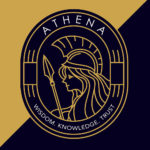 This Ask Athena column discusses style manuals. CSE will host a webinar about changes to the ninth edition of The CSE Manual (“Unveiling The CSE Manual, Ninth Edition”) on June 27, 2024. Register at https://cse.memberclicks.net/webinar-6-27-24.
This Ask Athena column discusses style manuals. CSE will host a webinar about changes to the ninth edition of The CSE Manual (“Unveiling The CSE Manual, Ninth Edition”) on June 27, 2024. Register at https://cse.memberclicks.net/webinar-6-27-24.
Dear Athena,
In a cover letter that was returned to our editorial office with a manuscript revision, the corresponding author expressed displeasure at having to ensure that reference citations were formatted according to our style, specifically about the number of authors listed. We follow the rule in the eighth edition of Scientific Style and Format, which is to include up to the first 10 authors, and if there are more than 10 authors, include all 10 followed by “et al.” This is clearly outlined in our journal requirements online, which the authors agree to follow when their manuscript is submitted.
This is not the first time an author has expressed such displeasure with this style point. It does seem excessive to list the first 10 authors, and I’m finding that other style manuals require fewer author names in references. Our editorial office is considering other style formats that might ease this author burden for future papers. Any suggestions?
—Ruffled by References
Dear Ruffled,
It can certainly be frustrating for authors to meet different formatting requirements for different journals. It’s possible this author does not use (or is not aware of) EndNotes or other reference management tools that are designed to simplify and expedite the process of compiling reference lists.
In your particular case, your journal instructions are available to the author, and the author agreed to follow your journal formatting rules when they submitted their manuscript. On the other hand, many journal production teams incorporate their own software tools to accurately and expeditiously format references during the copyediting process. It is entirely up to your editorial office and production resources whether this is an issue worth pushing for.
That said, rules change and style manuals are updated. As it happens, in the recently released ninth edition of The CSE Manual (the successor to the eighth edition of Scientific Style and Format), the “number of authors” rule has been updated—largely for the same reason that has been irking your authors until now. Athena asked Peter J Olson, ELS, Freelance Manuscript Editing Coordinator at the JAMA Network and one of the four editors of Chapter 29 (“References”), for details on this update.
The new rule is to cite only up to the first 5 authors, and for references with 6 or more authors, the list is truncated to the first author followed by “et al.” This update was modeled after reference styles adopted by some of the more prominent journals in the scholarly publishing industry—most notably Science and The Proceedings of the National Academy of Sciences (PNAS)—and is intended to promote efficient and concise citation of references, particularly in online and mobile platforms. The truncation to a single author when there are more than 5 authors also avoids the somewhat awkward situation of relegating a sixth author to “et al.” status in a reference that is merely 1 author name over the limit.
With this change in mind—and assuming you want to follow the most current CSE style—you will find yourself facing the decision of how and when your journal should transition to the new reference format. In all likelihood, this decision will be influenced by your journal’s size, workflow, and/or frequency. If you have a small journal that publishes infrequently, it may not be all that labor-intensive to make a clean shift from one issue to the next, since you will probably have a relatively small number of articles that need to be retrofitted for consistency. On the other hand, if you have a voluminous journal with a high frequency, and you’d rather not go through the trouble of reediting multiple reference lists, it may be just as well to allow an issue (or 2, or 3) to have a mix of the “before and after” reference styles from article to article and simply accept it as a minor and temporary casualty of the transition. If you take the latter approach, you could consider proactively addressing the short-term inconsistency by publishing an editor’s note in the first issue that incorporates the new style; doing so could help minimize your readers’ confusion while also letting them know that you haven’t abandoned your editorial standards.
Thank you, Peter, for the details of this change. We at Ask Athena are excited about the recent release of the ninth edition of The CSE Manual.
Always,
Athena
At Ask Athena, we recognize that there are often a variety of opinions and options when faced with sticky situations, especially those that do not have an obvious answer. We do our best to provide sound guidance, but appreciate that others may have a different view. In the spirit of open communication, we would love to hear your thoughts and answers on the questions we cover in the column. Email us at scienceeditor@councilscienceeditors.org.
Answers to Ask Athena questions are a group effort by members of the CSE Education Committee. Special thanks to Peter J Olson, ELS, for his contribution.
